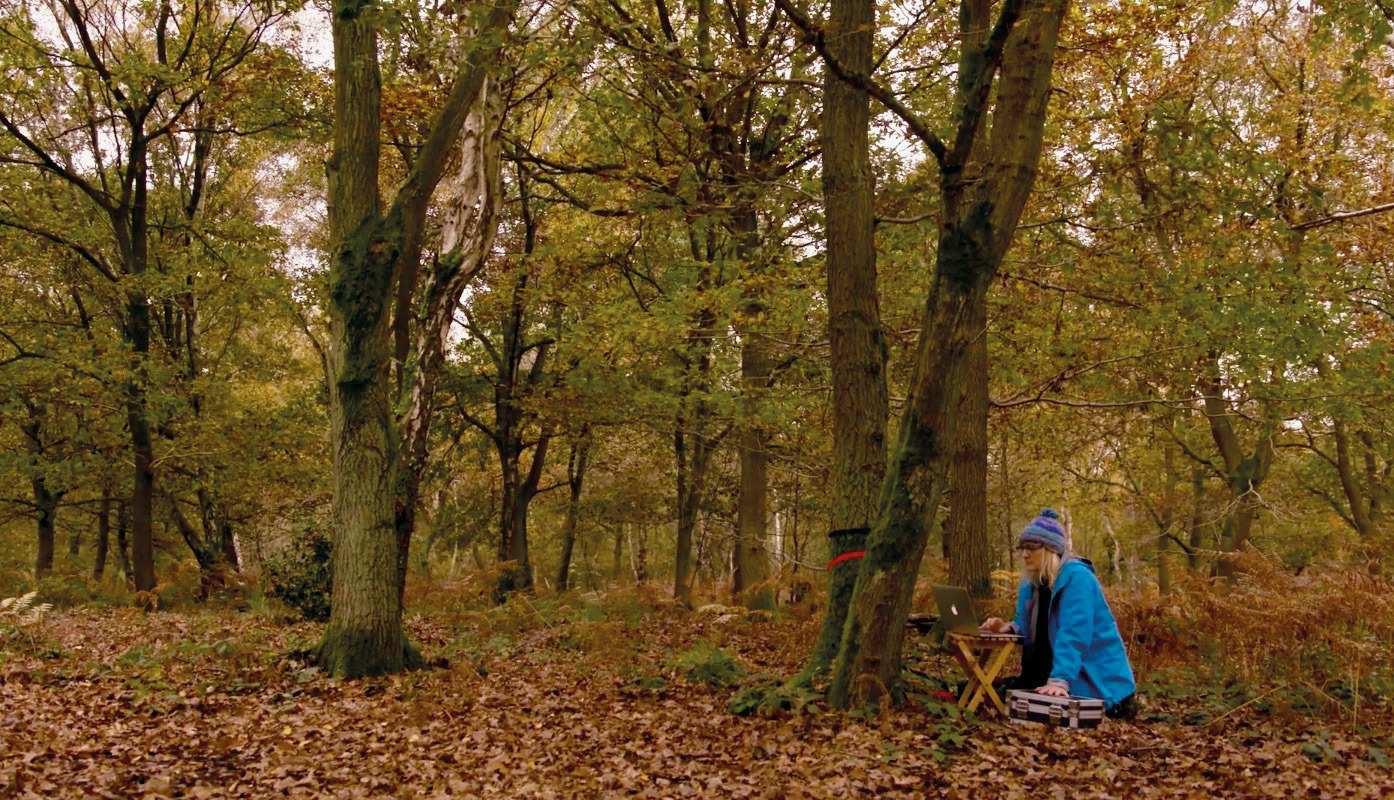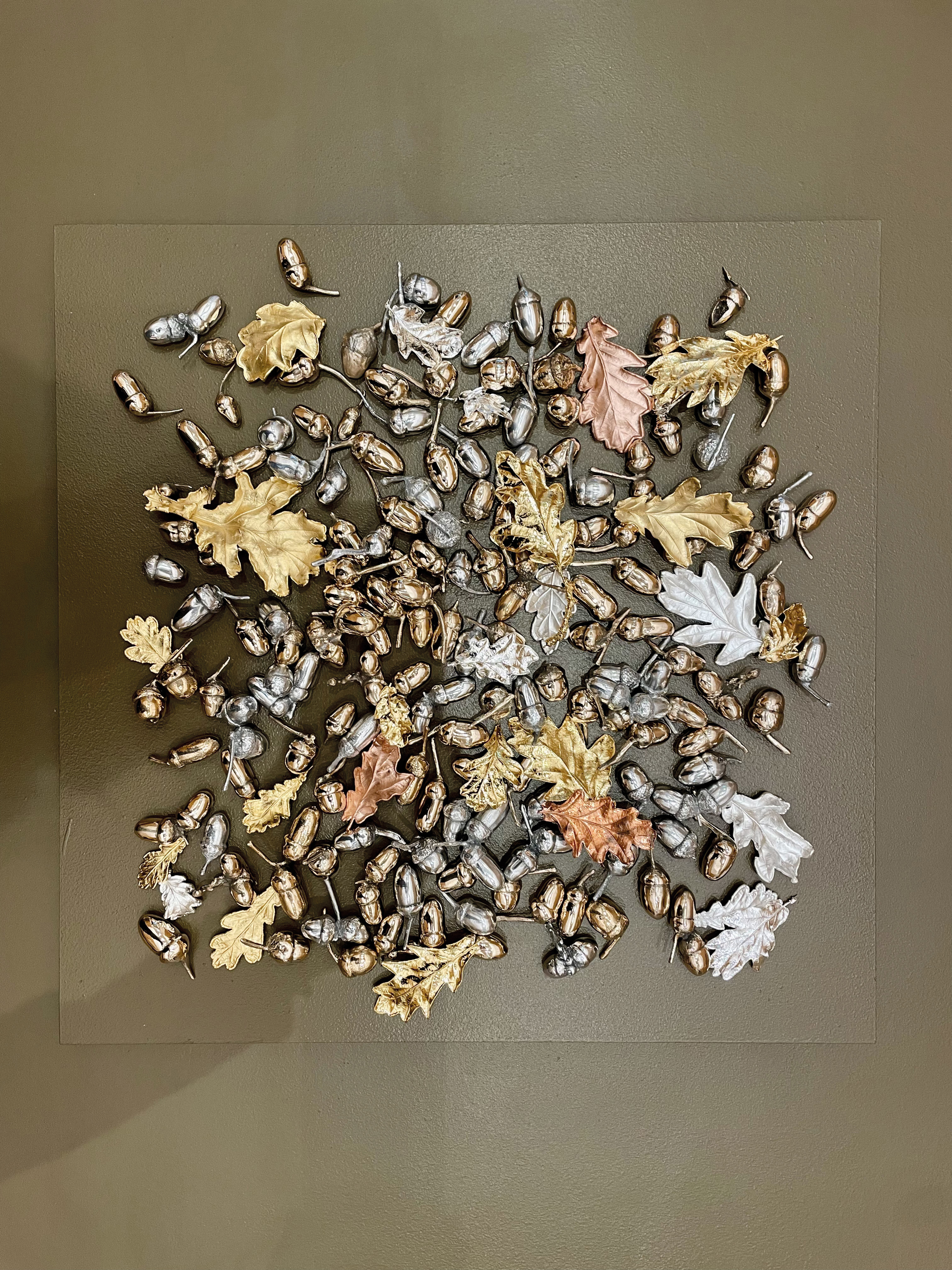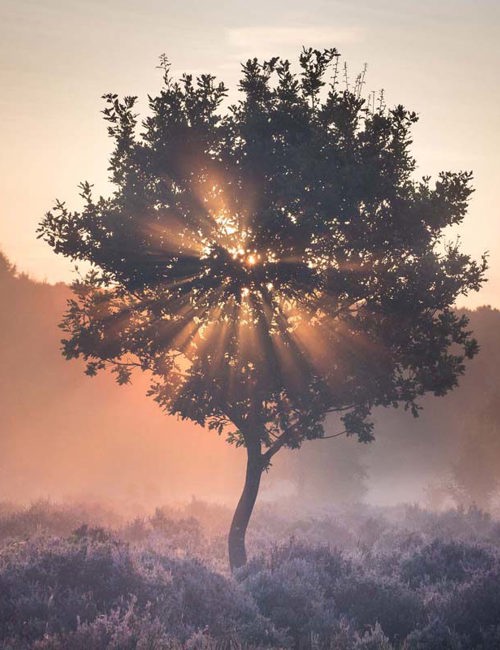Artist and Derby Uni’s Associate Professor of Interdisciplinary Arts, Caroline Locke is known throughout the country for her imaginative work with sculpture, light, and sound. Six of her creations are currently featured in FOREST: an ongoing exhibition at Nottingham Castle - in light of that she told us more about how forests ( particularly Sherwood Forest and the Major Oak) have become a central part of her art practice in recent years.

“Just down the road from me, in Sherwood, is a piece of ground with trees that have remained between two bits of road, which join the Mansfield Road,” says Nottingham artist Caroline Locke. “There is a sign there that is now old and unreadable but it used to say that this spot was once on the very edge of the Sherwood Forest - where the city joined it - which has always interested me.”
Sherwood Forest isn’t just a short distance from Caroline’s home - it’s also been at the back of her mind for decades. Her connection with the wood goes back to the early 90s, when she moved from her home county of Somerset to study Creative and Live Arts in Nottingham. Exploring the forest, the ancient canopies and sprawling pathways sparked her imagination, and partly kept her coming back to work in Nottinghamshire over the years.
Now, as one of the country’s leading interdisciplinary artists, Caroline, while her connection with green spaces in Notts has never been stronger.
Caroline’s work is currently displayed at a temporary exhibition at Nottingham Castle, titled FOREST and curated by Tristam Aver. Walking into the exhibition space you’re presented with a pretty immersive blend of art, video, sculpture, and writings on history and folklore, all related to forests, and what they’ve meant to people over time, especially in a Nottinghamshire context.
Exploring low lit spaces, you get a vivid sense of how woods have captured the human imagination for centuries, from writings on the mythic ‘Green Man’, to witchy rituals, to representations of early modern ‘enclosure acts’, the ‘right-to-roam’, and links established via art between climate-induced forest fires in Nottinghamshire, and more recent ones like those earlier this year in Los Angeles.
I guess that for an artist, to be hidden away in the gallery, only reaching an audience that is an ‘art’ crowd, isn’t quite so satisfying
Central to the whole experience, however, are six of Caroline’s artworks commissioned for the exhibition, the likes of which you certainly won’t find anywhere else. The first is Forest Bell: at first glance a shiny bronze handbell installed in an aluminium and wood frame. Scan the nearby placard however, and you’ll learn that the bell is tuned to the ‘frequency’ of a Sherwood Forest oak tree.
Trees, and the sonic frequencies they emit, have been on Caroline’s mind for a while now - “I was at Yorkshire Sculpture Park as part of an artist residency - I was building an installation in the chapel there, and was creating works focused on cymatics: sending sounds through water. I was interested in revealing the invisible,” she says, referring to an early iteration of her ‘sound fountains’: sculptures that visually project sonic waveforms from water onto nearby surfaces.
“Staying onsite I spent a lot of time walking in the trees - there was something about their movement which paralleled the movements I saw on the water,” Caroline says. “I wondered if I could find a mechanism of recording the movements over time. I thought about recording the number of times a branch moves from side to side over a minute, and started doing ad-hoc experiments. I then found a paper from a Nottingham University researcher who came up with a theory of recording the frequency of a tree to work out its health. What he did was use a laser scanner to map out the tree and record its movements against that.”
With this approach Caroline created The Frequency of Trees - an interactive group of tuning forks (still displayed at Yorkshire Sculpture Park) tuned to four trees: Oak, Cedar, Beech, and Horse Chestnut. Eventually Caroline started creating bells: sculptures that resonated (pun not intended) with climate change, and became a mechanism for reconnecting with the natural world.

“Bells are used for signals, bringing people together, and warning sounds. There’s a history of them being used in war, to let people know if they were under attack. But they’re also used for celebration. So they became pertinent for me in encouraging people to connect with nature, and protect our environment,” says Caroline, adding, “the other thing about bells is that they change their tone with the temperature. At Taylor Bells Foundry - where mine are cast - they tune them at 21 degrees centigrade. So as the temperature goes up there will be changes to their tone.”
In the lead-up to creating Forest Bell, for display in Nottingham Castle, Caroline created bells tuned to other trees, like Southwell’s original Bramley Apple Tree, Newton’s Apple Tree in Lincolnshire, and even a Bunya Pine in Brisbane Australia.
One creation: The Forest Charter Bell, is designed for socially engaged practice, and is used in tree planting sessions with Notts schoolkids. At local green spaces, Caroline has participating students ring the charter bell for each sapling that they set-a-growing.
“I’m hoping that they’ll create a memory then go back to the tree and make sure that it’s okay. I guess that’s what this socially engaged practice is about for me - trying to create situations where people connect with nature, and that connection becomes more important and lasting in their lifetime.”
And having leveraged this art-making method so often, was there anything more that Caroline could create for FOREST, at Nottingham Castle? Very much so - it turned out - she decided to go big or go home, and see about capturing the frequency of The Major Oak: arguably Nottinghamshire’s most famous tree which, according to Victorian legend, was a hideout for Robin Hood and his compatriots.
In the final exhibition room you see the project’s results - a year-long task with roots (get it?) in 2018, when Caroline started monitoring the Major Oak.

There’s lots to look at: from acorns and leaves, from Major Oak branches, cast in bronze and silver, to an immersive video conveying Sherwood Forest’s ambience. Then, arguably the focus: a documentary about the project, created by mate of LeftLion Georgianna Scurfield, seeing Caroline revisiting The Major Oak over a year, speaking with all kinds of folks about it - from Sherwood Forest locals, to University of Nottingham staff who helped her create the laser scan of the tree.
The end result was, perhaps, a little unexpected. The Major Oak’s frequency was so low that it required a 125 metre wide bell, which with earth’s gravity quite literally couldn’t function. To represent this the exhibition features a tiny, Major Oak model dwarfed by a gigantic bell: a statement, maybe, on the massive impact of just one, innocuous tree that we take for granted? Well, that’s up to the viewer.
What also stands out, however, are the impromptu conversations Caroline has beneath The Major Oak, featured throughout the documentary. From hearing stories about it, to the efforts people have taken to protect it, you come away from the film with a detailed impression of how trees, and forests, mean so much to people in so many different contexts.
“In these dangerous times we’re living in it is really about trying to take action, and trying to be actively engaged in what’s happening,” says Caroline. “I guess that for an artist, to be hidden away in the gallery, only reaching an audience that is an ‘art’ crowd, isn’t quite so satisfying.”
FOREST, featuring the work of Caroline Locke and other artists, is on display at Nottingham Castle until 2 November 2025.
We have a favour to ask
LeftLion is Nottingham’s meeting point for information about what’s going on in our city, from the established organisations to the grassroots. We want to keep what we do free to all to access, but increasingly we are relying on revenue from our readers to continue. Can you spare a few quid each month to support us?




